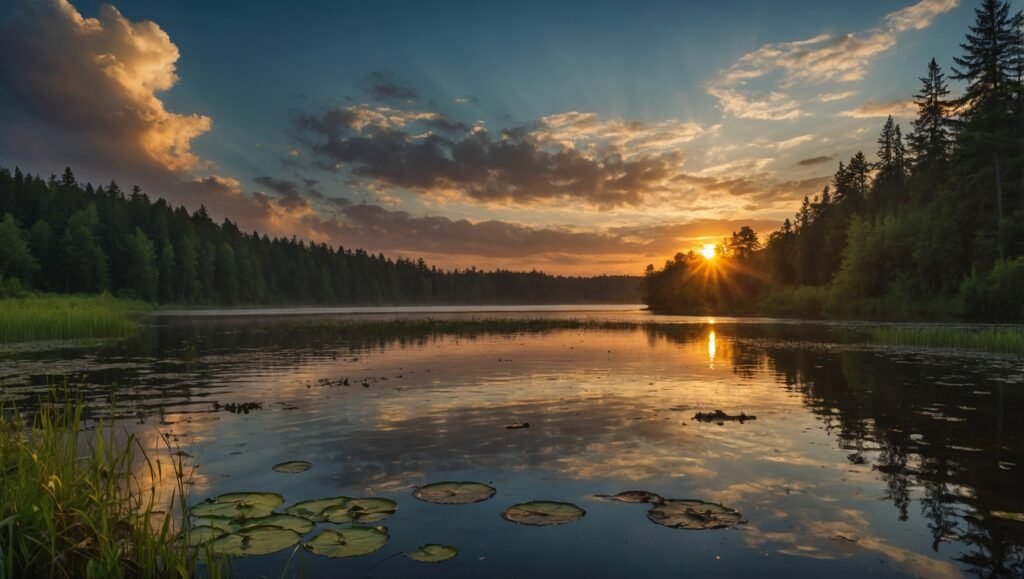
Mastering Nature Photography: Tips for Capturing Stunning Moments
by Adopik Team
Nature has an extraordinary way of captivating us—whether it’s the soft glow of the sun breaking through the trees, the intricate patterns of a butterfly’s wings, or the vastness of a mountain range. Capturing these breathtaking scenes through photography allows us to hold onto these moments forever. In this guide, we’ll dive deep into nature photography, from understanding its significance to applying essential techniques that will help you capture the world’s beauty through your lens.
What is Nature Photography?
Nature photography is more than just snapping pictures of landscapes, animals, or plants—it’s about capturing the raw essence of the natural world. This form of photography allows us to highlight the beauty, power, and tranquility of nature, telling visual stories that evoke emotion. Whether you’re photographing a serene lake at dawn or a bird in mid-flight, nature photography invites us to reconnect with the outdoors and appreciate its remarkable diversity.
Popular Types of Nature Photography
Nature photography comes in many forms, each offering unique challenges and rewards. Here are a few of the most captivating types:
- Landscape Photography: Captures the grandness and serenity of natural settings, such as forests, oceans, mountains, and valleys. Playing with lighting, composition, and perspective can transform a simple scene into a stunning masterpiece.
- Wildlife Photography: This type focuses on animals in their natural habitats. Patience is key here, as you’ll often spend hours waiting for the right moment to capture wildlife in action. Understanding animal behavior adds an edge to capturing those once-in-a-lifetime shots.
- Macro Photography: Delve into the intricate details of the world around you. Macro photography zooms in on tiny subjects like insects, flowers, and textures, revealing things the naked eye might overlook.
- Bird Photography: Birds present a special challenge with their speed and flight. Long lenses and quick reflexes are essential for getting those crisp shots of birds mid-flight or perched in their natural surroundings.
- Underwater Photography: Dive beneath the surface to capture the fascinating world of marine life. Special equipment is required to bring out the beauty of underwater landscapes and creatures, and the unique lighting conditions can make this genre particularly challenging.
Tips for Aspiring Nature Photographers
If you’re new to nature photography, don’t worry! Here are some essential tips to kickstart your journey:
1. Invest in the Right Gear
Having the right tools can make all the difference in capturing stunning nature shots. Start with a reliable camera—DSLRs and mirrorless cameras are great choices due to their versatility and image quality. Then, build your collection of lenses:
- A wide-angle lens for expansive landscapes,
- A telephoto lens for distant wildlife shots, and
- A macro lens for close-ups of intricate details.
Additionally, a sturdy tripod is your best friend for stabilizing your camera, especially in low-light conditions or when using longer lenses. Filters, like polarizers, can enhance colors and reduce glare, while a weather-resistant bag will protect your gear from the elements.
2. Understand Lighting
Lighting is one of the most critical aspects of photography. The natural world constantly changes based on the time of day and weather conditions, so understanding how to use light to your advantage is key. For softer, warmer lighting, aim to shoot during the “golden hour”—the hour after sunrise and the hour before sunset. Cloudy days can offer more even lighting for capturing fine details, while harsher midday light might create deep shadows and high contrasts.
3. Composition is Key
Your composition determines how the elements of your photo come together to create a visually appealing image. Try using the rule of thirds, which involves dividing the frame into a 3×3 grid and placing key elements along the gridlines or intersections. Additionally, leading lines (such as rivers, roads, or tree lines) help draw the viewer’s eye into the scene, adding depth and balance.
4. Patience Pays Off
Nature photography often requires you to wait for the perfect moment. Whether you’re waiting for the light to hit a mountain just right, or for an animal to appear, patience is crucial. Take your time to observe the scene, and anticipate when the magic will happen. It might take hours or even days, but the reward is worth it.
Finding Inspiration and Locations
One of the best things about nature photography is that inspiration is everywhere—from your local park to distant wildernesses. Here are some ways to find perfect spots:
- Explore Locally: Begin by exploring parks, reserves, or green spaces in your vicinity. You might discover hidden gems close to home.
- Chase the Seasons: Each season brings its own set of changes—blooming flowers in spring, vibrant colors in autumn, snow-covered landscapes in winter. Return to the same locations during different times of the year for fresh perspectives.
- Embrace the Weather: Don’t shy away from what may seem like “bad weather.” Rain, fog, or stormy skies can add drama and mood to your photos. Always prioritize safety, though, especially during extreme conditions.
Practice Makes Perfect
Nature photography is a skill that develops over time. The more you shoot, the better you’ll get at reading light, anticipating the right moment, and mastering your equipment. Spend time outdoors, experiment with different perspectives, and most importantly—enjoy the process.
Inspiring Nature Photographers to Follow
If you’re seeking inspiration, here are a few nature photographers who have made their mark in the field:
- Art Wolfe – Known for his extraordinary wildlife and landscape photography.
- Frans Lanting – His evocative wildlife images tell compelling stories.
- Cristina Mittermeier – A conservation photographer whose work raises awareness about environmental issues.
Conclusion
Nature photography allows you to connect with the world around you in ways you may have never thought possible. Whether you’re capturing grand landscapes or small details, every photo is a tribute to the beauty of the natural world. Armed with the right tools, techniques, and a keen eye for light and composition, you’ll soon be capturing nature’s breathtaking moments.
Happy shooting!




